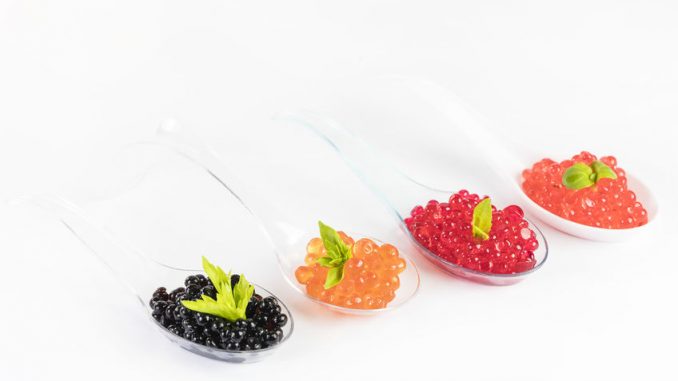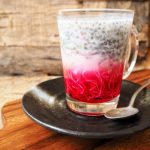
Molecular gastronomy you might say. Well indeed! It seems like a fix between cuisine, cooking and chemistry and to a great extent it is a mish-mash on science and the culinary arts but there is a lot more to it as a subject.
What it has created is a revolution in food preparation and its presentation. It’s also been the making of great chefs like Heston Blumenthal allowing him to present the essence of eating to a wider audience and the sensory experience that all this entails.
When you look at definitions on the internet it is a subdiscipline in food science that looks at the physical and chemical transformations of ingredients when they are prepared and cooked. This includes the preparation of gels, mousses, foams and so on.
However, there is much more to molecular gastronomy than just creating a structure. It also means art and social science get involved as well as the technical attributes of processing. That’s quite a tall order for anyone making it a subject in its own right because of the breadth of the discipline and the need for knowledge in a wide variety of arenas.
For us at FoodWrite, much of our business touches on molecular gastronomy. We are as our strap line says -all about understanding chemical and physical transformations in food. It makes for an interesting life!
Where Did The Subject Start?
The concept of molecular gastronomy in its present form took shape in 1989 when two gents Nicholas Kurti and Hervé established a title for this concept. It does of course have other titles which had been in use previously. We have avant-garde cooking, scientific cuisine, molecular cooking and so on but they all amount to the same thing. What is fascinating is the part it plays in the development of gastronomy generally.
Gastronomy is about “everything connected with the nourishment of man.” which is often quoted but was espoused by Jean-Anthelme Brillat-Savarin (1825) in the Physiology of Taste. Kurti and Hervé took this aspect of modernist cuisine and organized an event called the “International Workshop of Molecular Gastronomy.” It still occurs every two years and is a meeting of scientific and culinary minds on the topic.
It is not straightforward to study it as a discipline at university although there is one organization that has formalised it. In the United States, the Research Chefs’ Association have sponsored the field of Culinology®, which mixes up equal parts of food technology and the culinary arts. Its not exactly the same as molecular gastronomy but its as close to an academic course in the subject as anyone will get to. In this organization it is possible to become certified as a research chef and as a culinary scientist. Such certification helps in job applications so its worth pursuing for anyone wishing to add this science to their portfolio.
Some of the more notable topics cover the formation of physical structures from food. These might be foams and gels which exploit various ingredients in their creation and eventual stability. We can also discuss emulsions, the use of liquid nitrogen, forms of dehydration, the creation of powders and purees, smoking, snows and dusts.
We mentioned at the beginning that commercially many chefs and owners of their own restaurants have built considerable reputations if not added stars already to their illustrious Michelin guide portfolio by embracing wholeheartedly this concept.
Not all chefs though embrace the idea and have started to move away from the concept. Weird science is what a few notable artistes have called the topic because it only allows for a few people to be part of the experience rather than the greater mass which might go in for takeaway or develop a ghost kitchen.
Personal Observation Of Molecular Gastronomy In Practice
Not that long ago it was possible to see the practice of molecular gastronomy. I happened to observe a young cook placing his stainless-steel bowl on a kitchen scale, add a beaker of a defined amount of glucose syrup and then defined amounts of granulated sugar. Yes this was like product development but for a customer who had ordered a specific dish that needed some precisely measured combinations of ingredients. The combination of sugar with syrup meant that the exact proportions led to a syrup of the exact consistency and mix. The senior chef then explained to me how this would be used for the remaining recipe, he had also studied within the development of the recipe the implications of air humidity, temperature and pH when acids were added to create the very dish that he had aspired to a decade before. It sounded strangely like a research study into formulation science but this was really about more local recipe development.
If you are an amateur chef then its possible to conduct molecular gastronomy in the home. There are kits which now allow you to create gels and emulsions and help you to make a chocolate pasta or a pumelo foam (if that’s what you want). These kits come with tools like syringes, pipettes, silicone molds, chemical ingredients, a recipe booklet, and all the other paraphernalia you’ll need to style your food like it’s modern art..
These kits might be the inspiration for process developers too. The engineering behind extrusion has its place in creating new and exciting textures that come in part from molecular gastronomy. There is also a similar development behind that of sous-vide cooking.
All these processing technique have some basis in modernistic cuisine. It could be said that the creation of alternative meats such as the meatless burger are a consequence of playing around with extrusion technology. It’s also helped develop new food stuffs for example in confectionary, pasta shapes and the such like.



Leave a Reply